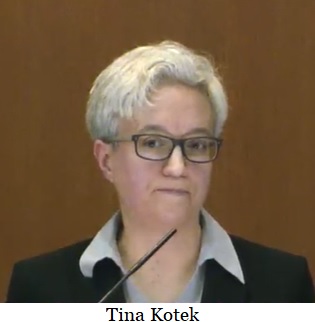Workshop explores both natural and technological strategies for carbon reduction, utilization, and storage
Oregon Governor Tina Kotek delivered opening remarks at the fourth and final workshop of the Western Governors’ Association’s (WGA) Decarbonizing the West Initiative, hosted by the State of Oregon.
In Governor Kotek’s opening remarks, she states, “Oregon has long been a national leader in establishing strong climate policies. Under my leadership as Speaker, we passed very bold climate policies to collectively reduce greenhouse gas emissions by at least 45% below 1990 levels by 2035.”
What actually happened is in 2020, Governor Brown issued
Executive Order 20-04, which added a 2035 interim goal to achieve greenhouse gas levels that are 45 percent below 1990 levels by 2035. It also updated greenhouse gas levels for 2050 to be at least 80 percent below 1990 levels. In 2023, as part of the
Climate Action Roadmap to 2030, the Oregon Climate Action Commission recommended a package of GHG goal updates. However, there is no evidence that these goals were “passed into law” by the legislature with public hearings. The proposed updates included:
- Oregon will achieve at least a 45 percent reduction below 1990 levels by 2030.
- Oregon will achieve at least a 70 percent reduction below 1990 levels by 2040.
- Oregon will achieve at least a 95 percent reduction below 1990 levels by 2050.
- By 2050, or as soon as practicable, Oregon will also achieve net zero emissions and achieve and maintain net negative emissions thereafter.
The Governor continues her remarks saying, “These policies are an important step forward, but only if they are implemented well, and equitably across the state to benefit our communities, and especially our underserved rural and frontier communities.” Was her use of “rural” separate from “frontier” communities a deliberate implication of wealth disparities for the underserved?
Governor Kotek says transformative, transitional work is already underway. The Pacific Northwest Hydrogen Association’s PNWHG Hub was selected by the U.S. Department of Energy as one of the nation’s cleanest energy hubs in the nation. Spanning across Oregon, Washington and Montana, it will leverage clean power and innovative technology to accelerate the production of clean hydrogen energy.
Mean while the Federal Energy Regulatory Commission (FERC) is being pushed by nonprofits to remove dams. US Geological Survey considers hydro dams as renewable energy, but all forms of energy needs equipment that isn’t classified as “green.” Dams, however, have the highest electric generation capacity of all U.S. power plants. Four dams are scheduled for removal on the Oregon/California boarder to benefit the Coho Salmon. Seven dams in the Willamette Valley are on the list to close its hydro power but not removed because they are flood control structures. Governor Kotek has in mind to replace it with 1500 acres of solar energy. How is she spending Oregon’s share of $7 billion in federal funding on “green” hydrogen?
To listen to the Governor’s remarks, click
here.
Decarbonizing the West is the 2024 WGA Chair initiative of Wyoming Governor Mark Gordon. The initiative examines how decarbonization strategies and technologies, including carbon capture, utilization, and storage (CCUS) technologies, direct air capture (DAC), and natural sequestration, can position western states at the forefront of innovation and reduce the effects of carbon emissions on the environment. Carbon capture and storage involves capturing carbon dioxide at emission sources, such as power stations, then transporting and storing it underground.
A D V E R T I S E M E N T

A D V E R T I S E M E N T
The webinar included exploration of regulatory framework to managing risks in accessing large-scale, permanent carbon storage that is necessary to support the growth of the carbon capture industry. Geologic carbon storage for long-term storage of carbon has liability challenges that may be prohibitive to project development. The development and operation of geologic storage facilities carries technical risks, such as potential leakage and induced seismicity, which in turn may present regulatory, legal, economic, and social challenges.
Of the two methods of carbon sequestration, geologic and biologic, the WGA is focused more on geologic even though biologic carbon sequestration can be accelerated through natural methods of land use and agricultural practices. Geological sequestration refers to capturing CO2 from factories, then compressed and transported for storage underground in depleted oil and gas reservoirs, saline formations, or deep, coal beds unsuitable for mining. Storage has risks and leakage is deadly. Each method has some drawback and storage costs along with cost of energy to sequestrator carbon should turn the research towards natural processes.
Geological sequestration from factories are mostly in metropolitan and suburbs that are highly populated. Governor Kotek’s reference to “rural and frontier communities” is not for their equitable benefit. What gets sequestrated from cities will most likely get transported to “rural and frontier communities” where there is land for storage plants. To say that storage plants are a benefit comes with all the risks. It can be fatal if the injected gas leaks out due to structural faults in the geological formation. This is because carbon dioxide is denser than air and settles near the ground. Once the leak is stopped it could still take a day to dissipate.
An initiative report will be released at the conclusion of the initiative in summer 2024.
--Donna Bleiler| Post Date: 2024-03-13 11:14:59 | Last Update: 2024-03-13 02:06:18 |







